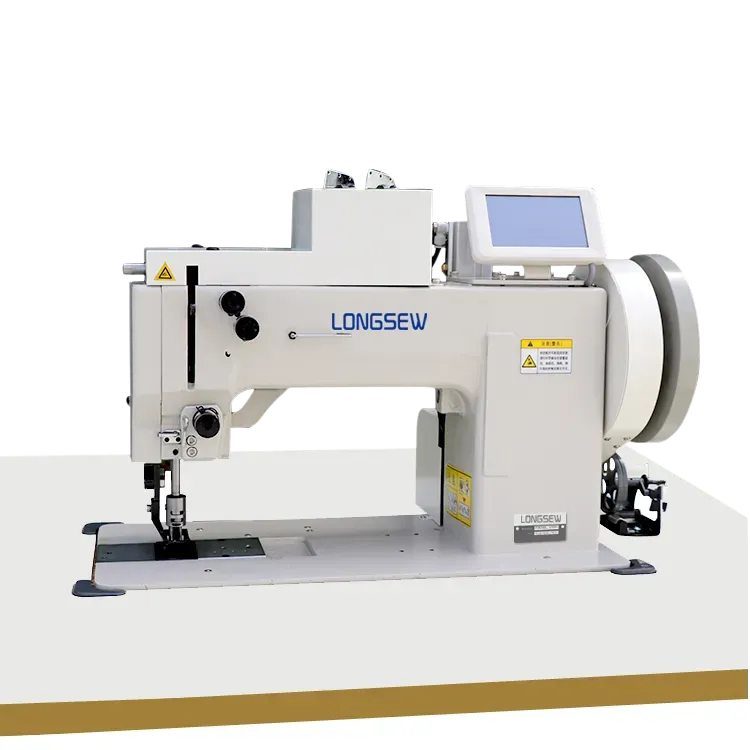Exploring the Techniques and Applications of 401 Chain Stitch in Textile Manufacturing
Exploring the World of 401 Chainstitch A Craftsmanship Revolution
In the ever-evolving landscape of textile arts, the 401 chainstitch has emerged as a cornerstone technique that not only reflects creativity but also embodies the precision and beauty of craftsmanship. This stitching method, often overshadowed by its more widely recognized counterparts, deserves a distinct spotlight for its unique characteristics and applications.
The chainstitch is a type of stitch that creates a series of connected loops, resembling a chain. This not only provides durability but also adds a distinctive texture to the fabric. The 401 designation refers to a specific form of industrial chainstitching that has gained popularity due to its efficiency and versatility in manufacturing.
Historical Context
The origins of chainstitching can be traced back to the 19th century when sewing machines began to revolutionize the textile industry. The introduction of chainstitch machines sought to improve upon hand-stitched techniques, providing speed and uniformity while still allowing for a degree of artistic expression. The 401 chainstitch grew from these innovations, becoming an indispensable tool in garment manufacturing, quilting, and decorative sewing.
Mechanics of the 401 Chainstitch
The mechanics behind the 401 chainstitch involve a unique mechanism that creates a double-threaded stitch. This stitch formation results in a strong and flexible seam that can withstand the rigors of wear and tear. Unlike lockstitch machines, which rely on two threads that intertwine, the chainstitch technique utilizes a looper to create its distinct appearance. This allows it to expand and contract, making it particularly suitable for elastic fabrics.
The simplicity of the 401 chainstitch machine also contributes to its popularity. With fewer moving parts compared to traditional sewing machines, maintenance becomes easier, leading to greater productivity in manufacturing settings. This efficiency is a game changer for businesses looking to maximize output without sacrificing quality.
Applications in Fashion and Craft
401 chainstitch

The applications of the 401 chainstitch are vast, spanning a variety of industries from high fashion to home crafts. In the realm of fashion, designers have embraced chainstitching to create intricate patterns and embellishments that enhance the aesthetic value of garments without compromising their functionality. The technique allows for a creative approach to finishing hems and seams, providing an artisanal touch to contemporary clothing.
For quilters and crafters, the 401 chainstitch is invaluable. It enables the creation of complex designs while ensuring that seams remain robust and intact. The ability to easily manipulate the thread tension allows crafters to experiment with varying stitch lengths, opening doors to creative expression that can transform a simple quilt into a work of art.
In addition, the chainstitch is often used for decorative purposes. Embellishing bags, home textiles, and even artworks, the unique texture it produces adds a striking visual element, making it a sought-after technique among creative individuals.
Environmental Considerations
As sustainability becomes a paramount concern for the textile industry, the 401 chainstitch presents an eco-friendly solution. The efficiency of the chainstitching process minimizes fabric waste, making it a more sustainable choice compared to traditional methods. The durability of the seams also extends the life of garments, reducing the need for frequent replacements and minimizing environmental impact.
Conclusion
In conclusion, the 401 chainstitch is more than just a sewing technique; it is a testament to the harmonious blend of tradition and innovation in the textile arts. From its historical roots to its modern-day applications, the chainstitch has proven itself as a crucial element in garment construction and decorative arts. Its unique characteristics, coupled with its sustainable advantages, ensure that the 401 chainstitch will continue to inspire and innovate in the crafting and manufacturing sectors.
As the world of fashion and textiles continues to evolve, embracing techniques like the 401 chainstitch will be essential for both creators and consumers looking for quality, durability, and style. Whether you are a seasoned artisan or a beginner exploring the art of sewing, incorporating chainstitching into your repertoire promises endless possibilities. Harnessing this skill could very well open a new chapter in your creative journey.
-
Boost Production Efficiency with a Pattern Sewing MachineNewsAug.29,2025
-
Industrial Excellence with the Best Heavy Duty Sewing MachineNewsAug.29,2025
-
Precision and Power with the Best Pattern Sewing MachineNewsAug.29,2025
-
Reliable Bulk Packaging Starts With the Right FIBC Sewing MachineNewsAug.29,2025
-
Advanced Packaging Solutions: Elevate Productivity with Jumbo Bag Sewing Machine and Industrial Stitching EquipmentNewsAug.29,2025
-
High-Performance Solutions for Bulk Packaging: FIBC Sewing Machine and MoreNewsAug.29,2025
-
Maximize Efficiency with an Industrial Cylinder Arm Sewing MachineNewsAug.28,2025


























